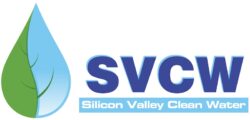Laboratory Services
Environmental science is the cornerstone of wastewater treatment.
Our laboratory staff provide vital chemical and microbiological analyses to the wastewater treatment plant 365 days a year. They collect and analyze water samples throughout the various stages of treatment, and provide our plant operators with quick feedback critical to maintaining and optimizing the treatment process.
The laboratory includes 6,500 square feet of working space and is staffed by a laboratory/environmental services director, a laboratory supervisor, one senior laboratory analyst, four laboratory analysts, and one part-time laboratory assistant.
The SVCW Laboratory is certified by the Environmental Laboratory Accreditation Program (ELAP) under the State Water Resources Control Board.
Microbiology
The Microbiology Section of the lab is critical to the wastewater treatment plant. Laboratory staff monitor both the effluent discharged to the Bay and the recycled water, testing for harmful bacteria. These tests include total coliform, fecal coliform, and enterococcus.
Staff also perform routine counting and evaluation of microorganisms from aeration tanks at the treatment plant. The number and relative percentage of various protozoa are directly related to the efficiency and health of the treatment plant processes.
Wet Chemistry
The majority of wastewater samples are analyzed in the Wet Chemistry section of the Laboratory. Staff provide quick feedback to plant operators, who monitor the levels of suspended solids, ammonia, and/or turbidity in the treated wastewater. Some results are available in four hours or less. Laboratory staff also perform long-term tests like biochemical oxygen demand (BOD), which is run for five days.
Instrumentation
Chemical instrumentation in the laboratory include
- An inductively-coupled plasma (ICP) spectrometer for measuring ug/L concentrations of metals;
- A total organic carbon (TOC) analyzer for carbon concentrations;
- A UV-visible spectrophotometer for chemical oxygen demand; and
- An ion chromatograph (IC) for measuring ug/L concentrations of fluoride, chloride, nitrite, nitrate, sulfate, and orthophosphate.
Acute Bioassay
Every month, staff conduct a 96-hour acute bioassay with oncorhynchus mykiss (rainbow trout) to monitor toxicity in the plant effluent before it is discharged into the Bay. Staff performs this test on 100 trout that range from 15 to 30 days old. The fish are kept in tanks that have the plant effluent continuously flowing for four days, so they are exposed to anything toxic that makes it through the treatment plant. The survival rate of the fish indicates the toxicity level of the effluent; we seek 100% survival rate. If survival rates are less than 100%, an exhaustive investigative study is triggered and adjustments to the treatment process are made.
